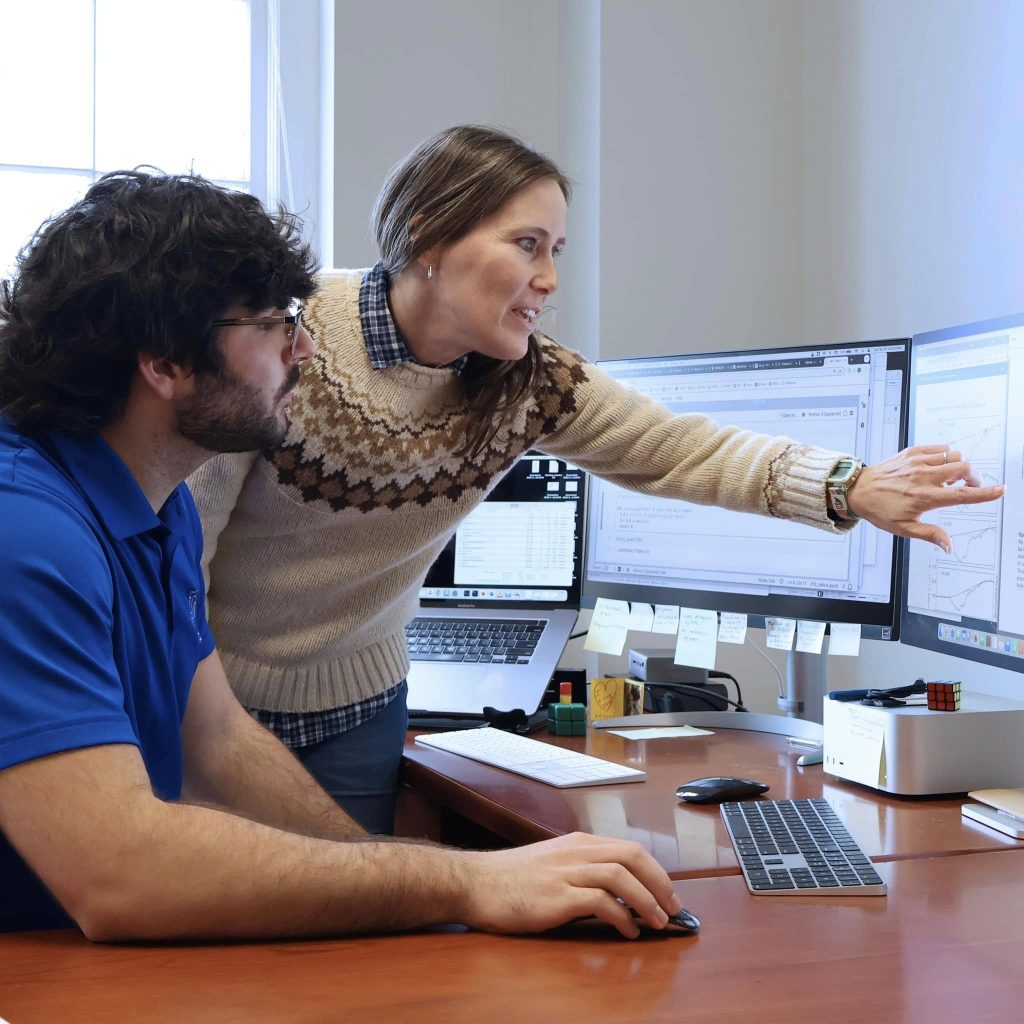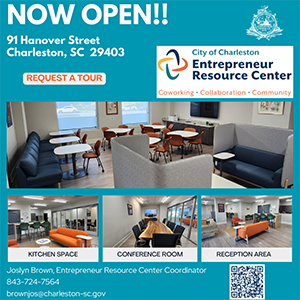NASA-Funded Astrophysicist Joins Presbyterian College Faculty, Inspiring Future Scientists
February 25, 2025“If we could see in gamma rays, this is what the sky would look like,” she said, pointing to a set
of massive, glowing bubbles that extend above and below the plane of the galaxy. “This is the X-ray part, and here’s the gamma-ray counterpart—these are the Fermi bubbles, the remnants of a past flare from our supermassive black hole.”
Cashman, an astrophysicist with research funded by NASA’s Hubble Space Telescope Program, recently joined Presbyterian College as an assistant professor of physics. A South Carolina native, she brings with her not only a wealth of knowledge but also a contagious enthusiasm for the mysteries of the universe.
A HOMECOMING TO INSPIRE THE NEXT GENERATION
Growing up in South Carolina, Cashman always had a fascination with space, a passion that led her to study physics at the College of Charleston before earning her Ph.D. at the University of South Carolina. She later conducted postdoctoral research at the Space Telescope Science Institute in Maryland, where she worked alongside some of the world’s leading astronomers.
Despite her successes in the field, she longed to return home and teach in a small liberal arts environment. When she saw an opening at Presbyterian College, she jumped at the opportunity.
“I knew I wanted to focus on undergraduate education and research,” Cashman says. “I didn’t want to be in a large institution where students had to fight for attention. At PC, I can work closely with students, mentor them, and give them hands-on research experience that will prepare them for graduate school and beyond.”

GROUNDBREAKING RESEARCH ON THE MILKY WAY’S HIDDEN STRUCTURES
Cashman’s research is centered on the structure and evolution of the Milky Way, specifically the mysterious high-velocity gas clouds that surround the Galaxy. These clouds do not rotate with the rest of the Milky Way, raising questions about their origins.
“Some of this gas could be ancient material falling into the galaxy for the first time, while other parts might have been ejected from the Milky Way itself,” she explains. “One of the ways we can determine their origin is by studying their dust content—if the gas is clean, it likely came from intergalactic space, but if it’s dusty, it’s been inside galaxies before.”
Through her NASA-funded research, Cashman is working to map the chemical composition of these gas clouds, tracking their movement and assessing their impact on the Galaxy’s evolution. Her work contributes to the broader field of galactic archaeology, helping astronomers understand how the Milky Way formed and how it continues to change.
FROM THE CLASSROOM TO CUTTING-EDGE RESEARCH
What sets Cashman apart as an educator is her dedication to bringing this advanced research directly into the classroom. Rather than simply lecturing about astrophysics, she invites students to participate in real-world projects, analyzing data from space telescopes and learning computational techniques used by professional astronomers.
At a large research university, undergraduate students often struggle to gain meaningful hands-on experience. But at PC, Cashman ensures they have access to opportunities that rival those at top institutions.
“I tell my students all the time, you don’t have to wait until grad school to do real research,” she says. “You can start now. I want to help them build skills that will make them stand out, whether they go into astronomy, physics, engineering, or even data science.”
One of her students is currently working on a summer research proposal to analyze a specific sightline of high-velocity gas. Another group will be studying spectroscopy, measuring the chemical composition of distant celestial objects.
“In my modern physics and nuclear physics classes, we talk about how the elements of the universe are created,” she says. “All of this—everything we’re made of—was formed in stars. By studying this gas, we’re tracing the very origins of the material that eventually forms planets and life.”
MENTORSHIP AND THE POWER OF A SMALL COLLEGE EXPERIENCE
Cashman is a firm believer that small colleges like PC provide an ideal environment for students to grow as scientists. She recalls her own experiences at the College of Charleston, where she had close mentorship from faculty, an experience that shaped her career path.
“You can’t hide in a class of 14 students,” she laughs. “And that’s a good thing! Students get more one-on-one time with professors, which means they really master the material. They also gain confidence—by the time they leave here, they’re ready to present research, tackle difficult problems, and ask big questions.”
She notes that many of the most successful physicists and astronomers she’s met came from small liberal arts colleges, where they had the space to develop critical thinking skills before moving on to top-tier graduate programs.
AN ADVOCATE FOR WOMEN IN SCIENCE
As a woman in astrophysics, Cashman is also passionate about encouraging more women to pursue careers in STEM. She recognizes the challenges that come with being in a male-dominated field but is committed to making physics more inclusive.
“I want my students—especially young women—to see that they belong here,” she says. “Physics isn’t just for a certain kind of person. Science needs diverse voices, different ways of thinking. The universe is vast and complex, and we need people from all backgrounds to help us understand it.”
BRINGING ASTRONOMY TO PC AND THE COMMUNITY
In addition to her work in the classroom, Cashman is helping expand PC’s physics curriculum to include a dedicated astronomy course as a general education requirement. She also hopes to engage the broader community through public outreach events, star-gazing nights, and collaborations with local schools.
“I think people have a natural fascination with space,” she says. “I want to make astronomy accessible to everyone—not just physics majors, but students in all disciplines and even people in the community.”
She envisions future projects where students help analyze NASA data, learning skills that translate across multiple career paths.
“We live in an era of big data,” she says. “By working with real astronomical datasets, students at PC will learn coding, computational analysis, and critical thinking skills that can apply to so many fields.”
A BRIGHT FUTURE FOR PC’S PHYSICS DEPARTMENT
Cashman is also excited about the direction of PC’s physics department as a whole. She speaks highly of her colleagues and the shared vision they have for making physics education more engaging and hands-on.
“We’re modernizing the way we teach, incorporating active learning and making sure students get real experience doing science,” she says. “This department is growing in a way that’s really exciting, and I’m thrilled to be a part of it.”
With her passion for astrophysics, commitment to mentorship, and dedication to research, Cashman is not only advancing scientific knowledge but also shaping the next generation of scientists at Presbyterian College.



















